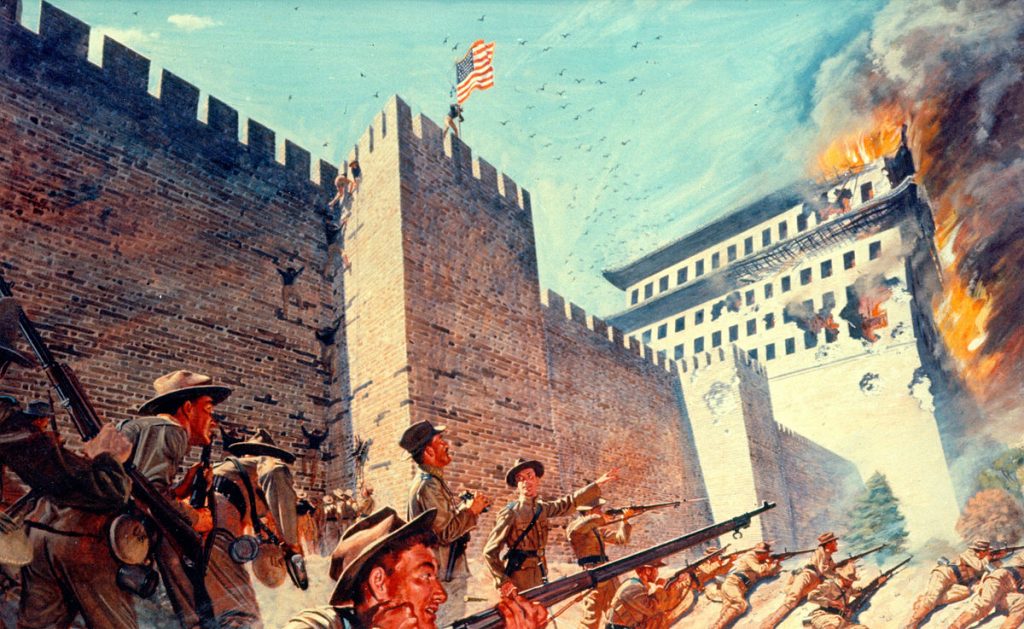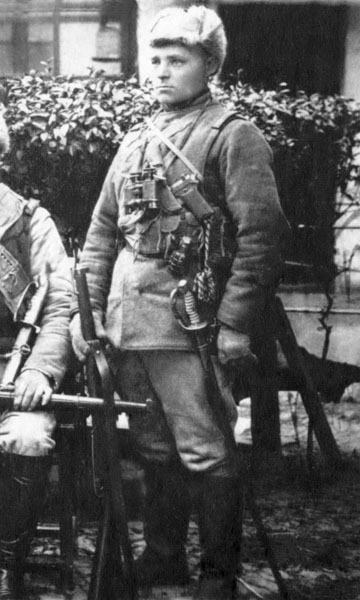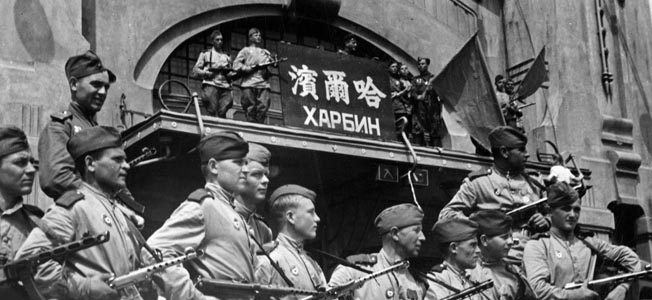The 20th century saw no shortage of bizarre fighting units across the world. From Islamic units in the Waffen SS to Brazillian’s fighting in the fields of France against Nazi tyranny. However, one of the even more bizarre units was one called the Asano Brigade. Made up of White Russians who had fled the Bolsheviks, the Asano Brigade was under the authority of Imperial Japan. In today’s article, we’re going to look at this bizarre story of the White Russians who fought for Imperial Japan.
Towards the end of the 1800s, Imperial Russia under Tsar Nicholas II had consolidated control over an area in the Far East called Manchuria. Home to Port Arthur, this was a highly strategic territory for both Imperial Russia and Imperial Japan at the time and had been heavily fought over in the years prior.

In 1898 the Boxer Rebellion broke out. The was an anti-imperialist, anti-foreign, and anti-Christian carried out by the Boxers who were traditional Chinese martial artists who intended to purge China of all Western presence using magic, traditional weapons, and bare hands and feet. In response, Japan, Russia, and western powers stepped in to crush the rebellion. tens of thousands of Boxers were slaughtered. During the rebellion, Russia had fortified Port Arthur with men. This meant that Manchuria was home to a large presence of ethnically and politically White Russians.
During the Russo-Japanese War in 1904, Imperial Japan captured and consolidated control over Port Arthur. Unlike the local Chinese population, the Russian population didn’t suffer under Imperial Japan and remained in the area. Travel back and forth to the nearby Russian motherland was not difficult to do.

Now we’ve laid the groundwork for this story, it truly begins during the defeat of the Tsarist forces during the Russian Civil War which raged from 1917 to 1922. Fleeing the Bolshevik rampage, many White Russians fled to join the Russian population in Manchuria. Once they arrived, the anti-communist Japanese gave them uninhibited access to the colonial territory. Before long, thousands of White Russians and anti-Communists were arriving in Manchuria. With a natural hatred of the Communists, they aligned themselves to the anti-Communist Japanese Imperial Army.

As the 1930s began, so had the imperialist ambitions of Japan and they began waging war with Chinese forces and expanding deeper in Manchuria. During their fight with the Chinese, the White Russian soldiers assisted the Japanese greatly and by 1934 the Empire of Great Manchuria was formed by Japan. This was essentially a puppet state of Japan and was ruled over by a Chinese leader named Aisin-Gioro Puyi installed by the Imperial Japanese regime.
The puppet state needed an army and the Japanese soon recruited thousands of men to fill the ranks of the Manchurian Imperial Army which was a subordinate to the Imperial Japanese forces. However, the fighting capability of the Manchurian Imperial Army was considered low. The White Russians, who had seen relentless combat against Bolshevik adversaries during the Russian Civil War, were considered too valuable to be thrown in amongst the ranks of this puppet state army.
In 1936, the Japanese began to form specialist units of White Russians and two years later they became known as the ‘Asano Brigade’. Their elite status earned them various privileges. which can be seen through the equipment they were issued. Men of the Asano Brigade were given the type 98 Japanese Infantry Uniform, an Arisaka rifle type 38, the Steyr-Solothurn S1-100 Submachine Gun, the Type 32 Cavalry Sabre, and the Type 14 Nambu Pistol. As well as special training and other privileges
The main function of the Asano Brigade was to carry out reconnaissance and sabotage. The Patron Saint of the Asano Brigade was ‘St George the Victorious’ and motto of these White Russians was ‘To Victory’! Throughout its existence, the Asano Brigade numbered between 800-3500 men. Its members were considered fanatical anti-Communists.

The White Russians of the Asano Brigade saw action against their Red Russian rivals during the two battles at Lake Khasan and Khalkhin Gol fought in 1938 and 1938 respectively. Some reports claim that the role of the Asano Brigade during these battles was to keep communication routes open between Japanese fighting units engaging the Soviet Red Army. Other reports claim that the Asano Brigade was engaged in frontline combat and lost up to 800 men at the Battle of Khalkhin Gol.
In 1941 as the Nazi-led Operation Barbarossa tore through the Soviet Union from the west, Imperial Japan was planning a way to launch an invasion of the USSR from the Russian Far East. To assist with this, 400 of the most elite White Russians of the Asano Brigade were chosen and sent for special forces training.
The Asano squads were then dispatched into the Soviet Union dressed as civilians or posing as soldiers of the Soviet Red Army. They subseqeuntly set about destroying Soviet property and supplies as well as murdering civilians to try and turn the Russian population against the Soviets.
However, as the tide of the war turned in the favor of the Soviets, the men of the Asano Brigade began ain’t heavy losses during their operations inside the USSR. By 1943 the Nazis were being pushed West and the Soviets could sense a possible Japanese invasion from the East. The border with Manchuria was subsequently fortified and troop numbers bolstered.
At the same time, Japan’s war in the Pacific required more of its men meaning many of the Asano Brigade took the place of Japanese troops in Manchuria. By December of 1943, the Asano Brigade became known as the ‘Russian Military Detachment’ of the Manchurian Imperial Army and ceased to exist

By the summer of 1945, the Soviets had launched an invasion of Manchuria. Western sources claim that captured former members of the Asano Brigade were executed. Russian sources claim that they were treated fairly and even offered the chance to join the ranks of the Soviet Red Army. The fate of these last remnants of White Russia remains obscured in history.
To explore the history of the White Russians through our range of Soviet tours in the Far East and beyond, check out our range of Private and group tours. For further research on the Asano Brigade and the White Russians who fought for them, we highly recommend this article by tandfonline.com.
